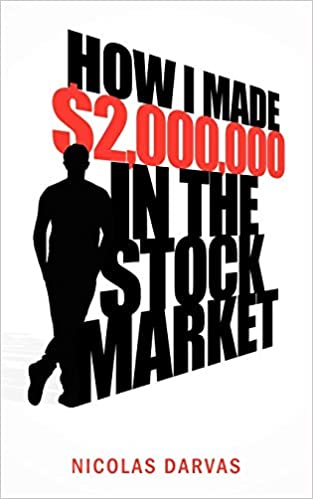I truly admire author and trader Darrin Donnelly for bringing the system that Nicolas Darvas used to make over $2 million in the stock market into modern times by really setting more precise metrics for the Darvas system. He uses moving averages we have today to look at possible price supports in addition to the price boxes that Darvas used. Below is a concise summary of the Darvas system in an up trending market.
The following is used with permission of Darrin Donnelly.
While O’Neil is a brilliant trader who has helped thousands make better investment decisions, I feel that there are some aspects of the CAN SLIM system that, frankly, aren’t all that important in picking winning stocks.
Therefore, we offer a new, easy-to-remember acronym for the Darvas System:
D – Direction of the Market
A – Accelerated Earnings and Sales
R – Relative Price Strength (and Return on Equity)
V – Volume Increasing
A – Aggressive Growth Group
S – Sound Base Pattern
To further explain:
D – Direction of the Market
Is the market, as a whole, in an uptrend? It is highly unlikely that a stock will have huge gains when the overall market is in a downtrend, so make sure the direction of the market is moving upward.
A – Accelerated Earnings and Sales
Is the company seeing increases in earnings and sales this quarter compared to the same quarter last year?
Normally, you want to see stocks with at least 40% increases in earning AND sales in the most recent quarter compared to the same quarter last year. And remember, the higher the increase in earnings and sales, the better. If you have a choice between a stock with a 50% increase and one with a 90% increase, definitely go with the 90% increase stock.
R – Relative Price Strength (and Return on Equity)
Is the stock outperforming most other stocks in terms of its price increase?
Darvas wanted to see stocks that had at least doubled over the past year before he’d consider buying. If a stock has already increased a great deal over the past year, most investors are fearful of a steep decline, but many studies have shown that Darvas was right in his assessment; if a stock had already made a powerful move, it proved that it had the ability to move in such a fashion and therefore, was likely to do it again.
Another important characteristic of ideal Darvas stocks is a high Return on Equity. Fund managers love to see a high ROE. Some put a higher value on ROE than they do earnings and sales.
William O’Neil conducted a 50-year study on top performing stocks. This study’s findings were published in his classic book How to Make Money in Stocks. O’Neil found that almost all of what he labeled “the greatest growth stocks of the past years” began their runs with a Return on Equity of 17% or higher. And just like when it comes to earnings and sales, the higher the ROE is, the better outlook for the stock.
Therefore, with the exception of rare cases when earnings or other conditions are extremely attractive, we should primarily buy stocks with a ROE of 17% of higher.
V – Volume Increasing
Is volume increasing on up days, particularly on the day when the stock breaks into new highs?
Volume can tell you so much about a stock. Ideally, you want to see much higher-than-normal volume when a stock breaks into new highs and lower volume when the stock declines.
A – Aggressive Growth Group
Is the stock a member of an industry group that has been increasing in price more rapidly than most other groups?
At any given time in the market, there are certain groups and sectors that are very hot. It’s always been this way and always will be this way. Make sure your stocks are members of these hot groups.
S – Sound Base Pattern
